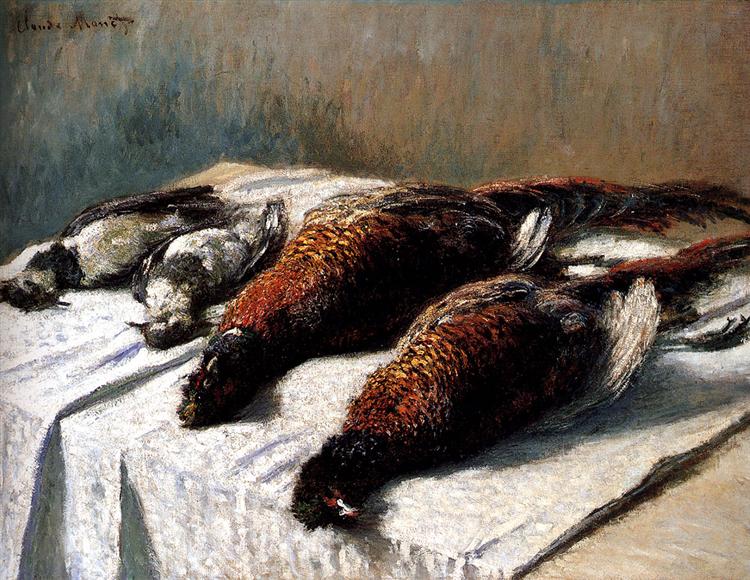Beskrivning
Claude Monet's Pheasants and Plovers, painted in 1879, immerses us in a universe of subtleties and flashes of color that are characteristic of the Impressionist master. In this painting, Monet captures the essence of nature and wildlife with an approach that goes beyond mere representation, directing our attention towards a sensorial visual experience. The expression of light, the use of color, and composition are fundamental aspects that intertwine in this work, contributing to its vibrant and dynamic atmosphere.
Monet chose a rectangular format for the composition, in which two pheasants, birds with lush plumage, are prominently featured alongside a group of plovers. The pheasants, with their intense feathers that vary in shades of green, gold and white, stand out against a background of more muted tones that evoke the natural environment in which they live. This contrast highlights Monet's mastery in handling light and colour: the pheasants become the focal point of the work, attracting the viewer's gaze and separating themselves from the surroundings through the use of light that seems to reflect off their feathers.
The background of the painting, though less detailed, is equally significant. Monet uses a more diffuse approach and a softer, earthier color palette to create the environment in which these birds are found. This technique of “painting with light” is one of the defining characteristics of Impressionism, where atmosphere and visual perception are more relevant than the exact representation of elements. The loose brushstrokes and splashes of color help convey the idea of an ephemeral and fleeting moment, an instant caught in time, which resonates with the modernist way of thinking in art.
There are no human figures in the scene, allowing the pheasants and plovers to occupy the space in its entirety, thus emphasizing their naturalness and freedom in the environment. This approach can also be read as a reflection of Monet's admiration for the beauty of wildlife and his desire to immortalize a moment of connection between humans and nature, a sentiment that permeates many of his works.
Although Pheasants and Plovers may not be as well-known as his landscape series or his iconic depictions of water lilies, the work fits neatly into Monet's cycle of exploration of light and nature, drawing parallels with other contemporary works depicting flora and fauna from an impressionist perspective. Monet, along with other artists such as Pierre-Auguste Renoir and Camille Pissarro, encouraged the use of light and color to explore new ways of seeing the world.
The legacy of Monet and his Impressionist style is undeniable, having laid the groundwork for later movements and the evolution of modern art. Pheasants and Plovers offers a window into his creative universe, reminding us of the beauty of observation, the transience of life, and the magic that lies in the small moments that often go unnoticed. At its core, this painting invites contemplation, urging viewers to pause and reflect on the intrinsic connection between humanity and nature, a theme that will never lose its relevance or charm.
KUADROS ©, a famous painting on your wall.
Hand-made oil painting reproductions, with the quality of professional artists and the distinctive seal of KUADROS ©.
Painting reproduction service with satisfaction guarantee. If you are not completely satisfied with the replica of your painting, we will refund 100% of your money.

